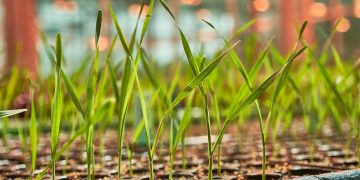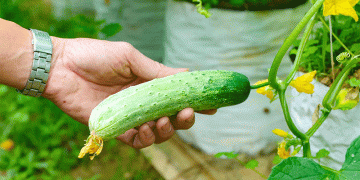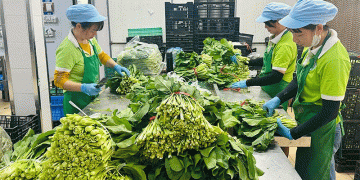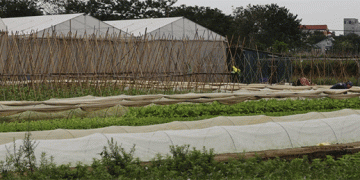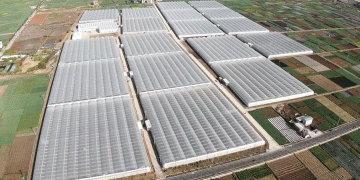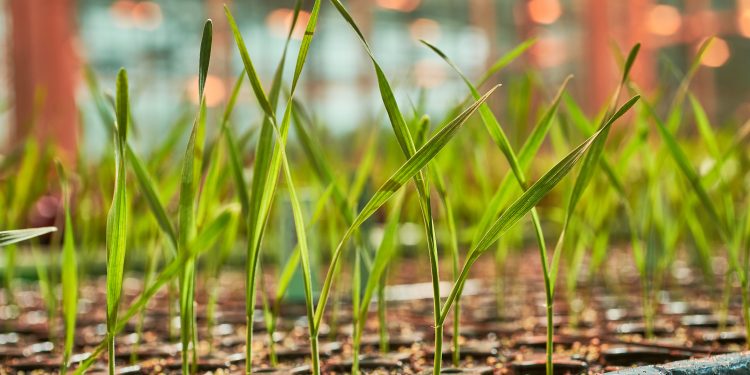- Strong business with cereals and rapeseed drives growth in the first quarter
- KWS Group net sales up 21%
- Significant improvement in EBIT and EBITDA
- Sales forecast raised to 10-12% (previously: 7-9%)
“KWS has made a rapid start to the new fiscal year due to a strong cereals and rapeseed business,” commented Eva Kienle, Chief Financial Officer of KWS. “Demand for agricultural seeds continues to develop very positively in view of favourable market prices for agricultural commodities. We expect this trend to continue and therefore expect more growth than originally forecast for the current financial year. At the same time, we continue to see noticeable cost increases in the current inflation environment, partly offset by higher selling prices.”
Business development Q1 2022/2023
The KWS Group’s net sales rose by around 21% in the first three months of fiscal 2022/2023, reaching €266.3 (220.8) million. The increase resulted in particular from the significant expansion of the cereals business in Europe. Overall, currency effects had a minor impact on sales. The KWS Group’s key operating earnings figures are generally negative in the first quarter, but improved year-on-year. EBITDA reached € –7.1 (–19.7) million and EBIT amounted to € –33.1 (–42.1) million. A significant increase in gross profit was partly offset by planned higher costs for research & development, selling and administration. The financial result declined to € –29.8 (–17.2) million, partly due to higher interest expenses in Brazil and Turkey. Earnings after taxes amounted to € –46.2 (–43.3) million or € –1.40 (–1.31) per share. Free cash flow improved to € –72.0 (–105.7) million, mainly due to advance payments received on seed deliveries for the upcoming sales season.
Overview of key figures
| in € millions | Q1 2022/2023 | Q1 2021/2022 | +/- | |
| Net sales | 266.3 | 220.8 | 20.6 % | |
| EBITDA | -7.1 | -19.7 | 64.0 % | |
| EBIT | -33.1 | -42.1 | 21.4 % | |
| Net financial result | -29.8 | -17.2 | -73.3 % | |
| Earnings before taxes | -62.9 | -59.2 | -6.3 % | |
| Income taxes | -16.7 | -16.0 | -5.0 % | |
| Net income | -46.2 | -43.3 | -6.7 % | |
| Earnings per share | in € | -1.40 | -1.31 | -6.8 % |
Business performance of the segments
Net sales at the Corn Segment in the first quarter of 2022/2023 rose by around 15% to €82.1 (71.2) million, mainly on the back of higher prices in Argentina. In the regions of Europe and North America, no significant net sales were generated in the quarter under review due to seasonal reasons. Since the segment does not generate the major part of its annual net sales until the third quarter (January to March) the segment’s earnings were again negative as customary for the quarter under review, also against the backdrop of cost increases due to inflation, and totaled € –46.5 (–40.1) million.
The Sugarbeet Segment, which posts only low net sales in the first quarter due to seasonal reasons, increased its net sales to €20.1 (18.3) million in the quarter under review, mainly due to growth in North America and Eastern Europe. The segment’s income was € –34.4 (–32.4) million, slightly below the level of the previous year, and was negatively impacted by the effects of hyperinflation in Turkey.
Net sales at the Cereals Segment rose sharply in the quarter under review to €155.7 (121.2) million, an increase of around 28%. This strong growth was once again driven by business with rye and oilseed rape seed, which rose by 27% and 26% respectively. The sharp increase in rye seed sales was attributable to a rise in demand and higher prices, as well as seasonal effects (in particular earlier sales in Germany compared to the same period of the previous year). The variety portfolio of oilseed rape seed posted sharp growth (due to volume- and price-related factors), in particular in France. Net sales from wheat and barley seed were also pleasing. The Cereals Segment also recorded high growth rates with its catch crops and organic seed, areas with a highly promising future. With its broad portfolio and as one of Europe’s leading breeding companies, KWS is well positioned to benefit from the move toward more sustainable agriculture. Given the strong growth in net sales and an improved product mix, the segment posted an above-proportionate increase in income to €62.3 (43.1) million.
Net sales at the Vegetables Segment rose by around 8% to €10.9 (10.2) million, mainly due to higher sales of spinach seed in Asia. The segment’s income improved to € –2.6 (–4.5) million due to lower effects from the purchase price allocation. Excluding these effects, the segment’s income was € –0.2 (0.4) million. The segment’s income also includes R&D expenditure of €3.2 (2.0) million aimed at the long-term establishment of vegetable breeding at KWS.
Net sales at the Corporate Segment were €1.5 (2.3) million. They are mainly generated from KWS’ farms. Since all cross-segment costs for the KWS Group’s central functions and basic research expenditure are charged to the Corporate Segment, its income is usually negative. The segment’s income was € –30.7 million and thus down on the previous year’s figure of € –25.2 million, in particular due to higher expenditure on research and development.
Outlook for the 2022/2023 financial year
For the KWS Group, the Executive Board now expects net sales growth (on a comparable basis, excluding currency and portfolio effects) of 10-12% (previously: 7-9%) for fiscal 2022/2023 due to the positive business development after the first three months. The EBIT margin is still expected to be between 10% and 11%. The research and development ratio is expected to be in a range of 18 to 20%. For the product segments of KWS, the previous forecasts remain unchanged with the expectation of significant sales growth (on a comparable basis) and EBIT margins at the previous year’s level.
You can find the quarterly report online at www.kws.com/ir
